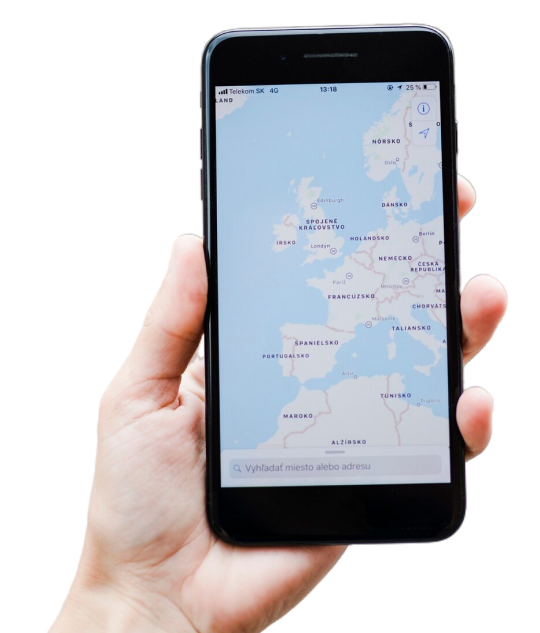
This is the Best eSIM for Bali
Alright, let’s be real. You’ve been dreaming of Bali. The spiritual vibes of Ubud, the perfect waves of Uluwatu, the vibrant chaos of Canggu. You’ve got your flights booked, your villa is secured, and your Instagram captions are already half-written. But there’s one thing that can derail all your perfectly laid plans: getting connected. Trust me, I’ve been there—standing in a sweaty airport line, trying to explain to a vendor with a half-smile and a shake of their head that I just need data, not a lifetime supply of Indonesian minutes. It’s a classic travel frustration.
But what if I told you there's a better way? A way to land in Denpasar and be instantly connected without a single bit of faff? That, my friends, is the magic of an eSIM. And after multiple trips and countless experiments, I’m convinced the best way to handle this is with a provider like eSIM4u. I’m going to walk you through exactly why an eSIM is the superior choice for Bali, share my personal experience, and give you the lowdown on a service that made my last trip completely seamless.
Why Ditch the Physical SIM Card?
Before we get to the good stuff, let’s talk about why the old way of doing things just doesn't cut it anymore. When you arrive in Bali and opt for a physical SIM, you’re often faced with a few frustrating realities.
First, there’s the airport kiosk dilemma. The prices can be inflated, and the sales pitches are often confusing. They'll promise you a "special tourist package," but what you're really getting is a plan with limited high-speed data that might switch to a snail's pace after a few days. And if you're like me, you don't want to be thinking about data caps when you're trying to find the best nasi goreng.
Second, there’s the hassle of registration. In Indonesia, all SIM cards need to be registered to your passport and an IMEI number. This process can be a pain, and it often involves handing over your personal details to a stranger at a small booth. When I used a physical SIM on my first trip, the guy just took a picture of my passport and phone, and I felt a bit uneasy about it. With an eSIM, all of that is bypassed.
Third, you risk losing your home SIM card. That tiny little chip is surprisingly easy to misplace, and trying to replace it from a foreign country is a nightmare. I know a friend who had to spend an entire day in a local shopping mall trying to get a new one from his home carrier. Not exactly the Bali experience you want.
The eSIM Revolution: A Quick Breakdown
So what is an eSIM, exactly? Think of it as a digital version of your physical SIM card. Instead of a plastic chip you insert into a tray, it's a small piece of hardware already embedded in your modern smartphone. You just need to download a "profile" to activate it. This is done with a simple QR code, and it takes minutes.
The best part? You can do it all from the comfort of your couch before you even leave for Bali. I personally did this with eSIM4u a few days before my flight. I chose my plan, paid online, and received a QR code in my email instantly. No lines, no haggling, and no giving my passport to a stranger. It was a game-changer. The minute my plane landed and I turned off airplane mode, my phone vibrated with a "Welcome to Indonesia!" text. It was that effortless.
The Case for eSIM4u in Bali
I've tested a few different eSIM providers on my travels, but eSIM4u really stood out for my Bali trip. Here's why I think it's the best option.
First, their pricing is transparent and competitive. There are no hidden fees or confusing data allocations. You know exactly what you're paying for. I chose a 20GB plan for 30 days, which was more than enough for my needs. I was constantly using Google Maps to find cafes, booking Go-Jek rides (Bali’s version of Uber/Grab), and of course, posting photos and videos to my social media.
Second, their network coverage is excellent. The eSIM4u plan I used connected me to the Telkomsel network, which is widely regarded as the best and most reliable provider in Indonesia. I had strong 4G coverage everywhere, from the busy streets of Kuta to the more remote corners of the Nusa Islands. I even had a stable connection while exploring a rice terrace in Ubud. There were no dead zones, which is a big plus when you're trying to navigate on a scooter.
Finally, the setup process is ridiculously simple. I'm not the most tech-savvy person, but the instructions from esim4u were foolproof. It was literally three steps: scan the QR code, name the plan (I called mine "Bali Data"), and then select it as my primary data line. It worked perfectly. There’s no need to fiddle with settings, and it all happens in a matter of minutes.
My Personal Experience: From Airport to Açaí Bowls
My last trip to Bali was a week-long journey through Canggu and Ubud. I had pre-booked my eSIM4u plan, so I was able to relax on the plane without any pre-arrival stress. As soon as we landed, I took out my phone, went into settings, and selected my new eSIM plan. Boom! I was instantly online.
The first thing I did? Ordered a Go-Jek motorbike ride directly from the airport to my hotel. No need to look for a taxi or an airport shuttle, and I saved a good chunk of money. Throughout my trip, I relied on my eSIM for everything. I found the best hidden beach clubs in Uluwatu, used my banking app for transfers, and stayed in constant contact with my friends back home via WhatsApp. It was a completely seamless experience. The data speed was fast enough to stream music and even upload a few stories without any buffering.
Tips for Using Your eSIM in Bali
-
Check compatibility first: Before you buy, make sure your phone is eSIM compatible. Most newer iPhones (XS and above), Google Pixels, and Samsung Galaxy models are.
-
Keep your home SIM active: A huge benefit of an eSIM is that you can keep your home SIM active for calls and texts. Just make sure to set your eSIM as your primary line for cellular data to avoid any roaming charges.
-
Monitor your usage: While a 20GB plan from a store like eSIM4u is generous, it's still a good idea to occasionally check your data usage. Most phones have this built into the settings, and it’s a good way to ensure you don’t run out before your trip is over.
-
Download offline maps: Just in case you find yourself in a super remote area with spotty service (though with Telkomsel, it’s unlikely), it’s always a good idea to download offline maps on Google Maps.
Final Thoughts: Your Bali Trip, Simplified
So, if you’re planning your Bali getaway and you want to avoid the common travel headaches, do yourself a favor and get an eSIM. The convenience, transparency, and reliability make it the single best connectivity solution for your trip. Forget the airport queues and the confusing packages. Get your eSIM from a trusted provider like eSIM4u and focus on what truly matters: soaking in the incredible culture, beautiful scenery, and unforgettable moments that Bali has to offer.
Ready to simplify your Bali trip? Head over to esim4u and get your plan today!


100% Money Back Guarantee
If you cancel your trip or experience tech issues that we can’t fix; we’ll refund you 100%.









